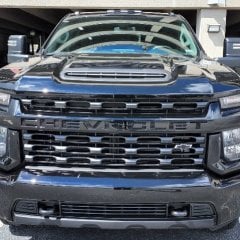Radiator fans turn on immediately on cold start, turn off on operating temp
-
Similar Content
-
14-18 silverado power heated/cooled seats retrofit HELP
By Lael Howard,
- Power heated/cooled seats
- Heated seats
- (and 22 more)
- 2 replies
- 218 views
-
- 5 replies
- 676 views
-
- 1 reply
- 667 views
-
- 3 replies
- 1,194 views
-
- 0 replies
- 1,010 views
-
-
Recently Browsing 0 members
- No registered users viewing this page.
-
Forum Statistics
246k
Total Topics2.6m
Total Posts -
Member Statistics
-
Who's Online 25 Members, 1 Anonymous, 1,654 Guests (See full list)



















Recommended Posts
Join the conversation
You can post now and register later. If you have an account, sign in now to post with your account.